Rules and tips for growing artichokes
Growing artichokes in Russia is not as popular as, for example, in France or other foreign countries. But if you ask yourself this question, you can grow this healthy and tasty delicacy right in your garden. How to do it correctly and what are the important nuances to consider?
Artichoke cultivation methods
The Canary Islands are considered the birthplace of the artichoke, so it is not surprising that the plant is thermophilic and prefers sunny, wind-protected areas. In central Russia, artichoke cultivation is possible only by cuttings or seedlings. But in the south of the country, you can sow seeds directly into the ground. Let's take a closer look at each method.
Seedling method
You should start growing artichoke seedlings about 2 months before planting in open ground. That is, in the middle or end of March, you can start soaking the seeds. To do this, they are placed in water at room temperature for a day. Then they act according to the following scheme.
- Place the required amount of seeds on a wet cloth, burlap or sawdust.
- After germination, 10% of artichokes are hardened. For this, the swollen seeds are placed in a refrigerator for several days. The temperature must be kept at 0.
- Then they wait until the sprouts reach 1.5 cm in length, and plant them in containers with a volume of at least 0.5 liters. For soil, it is better to use a mixture of equal parts of humus, sand and turf.
- Further, the seedlings are grown at a temperature of 23-25 degrees.
- After about 2 weeks, the first real leaf appears, which means it's time to pinch and dive the artichoke seedlings. In order for the root system to grow powerful, the end of the root of the plant is carefully pinched off and then the seedlings are planted in different pots.
- After 2 weeks, the seedlings are fertilized with diluted manure (the ratio with water is 1 to 10), after another 2 - with complex mineral fertilizer.
- 2 weeks before planting in a permanent place, artichokes are hardened, gradually lowering the air temperature to 15 degrees Celsius.
Cuttings
When grown in this manner, the largest and healthiest artichokes are dug up in the fall. The rhizomes are separated from the aerial part and placed in a container. They are stored in a cellar, having previously sprinkled with dry peat. In the spring, all new shoots are cut off and the rhizomes are planted in pots with a nutrient mixture of sand, earth and humus. Saplings appear in about 3 weeks. Artichokes are transplanted into open ground in mid-May. They begin to bloom earlier than plants grown from seeds.
Sowing with seeds
You can sow seeds of artichokes before winter or in spring and summer, when the earth warms up to 10 degrees. For planting, dig small holes 3–5 cm deep and place 2–3 seeds in each. The optimal distance is 50–70 cm, and for the southern regions - 90–140 cm. After germination of seedlings, no more than 2 plants are left in the hole. When grown in this way, the crop appears only in the second year.
Landing in open ground
The preparation of the site for the future planting of the artichoke begins in the fall. To do this, a hole is dug 1 square meter in size and 60 cm deep. Drainage from pebbles or expanded clay is laid down with a layer of 10 cm.After that, the pit is covered with earth, sand, humus and peat (ratio 3: 3: 3: 1). In the spring, 2 weeks before planting the artichokes, the soil is loosened and mineral fertilizer is applied (100 g per square meter). Then, holes are made according to the scheme 70x50 cm (in the south - 140x90 cm) and humus is introduced into them, thoroughly mixing with the ground (500 g each).
As soon as the weather becomes stable warm, and 3-4 true leaves appear on the plants, the seedlings are planted in a permanent place. The planting depth should be 5 cm more than the height of the pot. After planting, the plants are watered abundantly at the root.
Advice
Artichokes grow best after potatoes, legumes, root vegetables, cabbage.
Care
Growing an artichoke outdoors is not difficult. It is enough to water and feed the seedlings regularly. So how to do it right?
- Watering.
Artichokes need regular watering, especially during dry periods. 1 square meter requires approximately 7 liters of water. During the flowering period, plants should be watered less frequently.
- Fertilizer.
For the entire period of growth, the artichoke needs 3-4 feeding. You can feed seedlings with both organic and mineral fertilizers. It is optimal to alternate watering with slurry (0.5–1 l per plant) and spraying with a solution of superphosphate, wood ash and potassium chloride (ratio 10:25:10). The main thing is not to abuse nitrogen fertilizers, otherwise the artichoke will form a dense plant mass, and will not release flower stalks.
- Protection from pests.
To avoid the formation of rot, the seedlings of artichokes are sprayed with fungicides, and if aphids are affected, insecticides are used. If slugs eat the shoots in wet weather, special anti-slug granules are laid around the plants.
- Increased productivity.
In order for the heads to grow large, no more than 4 inflorescences are left on one artichoke, the rest are plucked and thrown away. In addition, 2 weeks before ripening, the stems under the heads are carefully pierced with a toothpick.
Advice
At first, artichokes grow slowly and do not use the entire area allocated for them. Therefore, it is advisable to plant some early ripening culture (for example, mustard, spinach or salad).
Harvesting and storage
Artichoke is a rather large plant, its width and height can reach 2 meters. The peduncle stem appears around mid-August. The flowers resemble baskets in appearance, have a bluish tint. The diameter of one head can vary from 8 to 25 cm, and the weight - from 70 to 200 g. Their ripeness is determined by the upper scales. If they began to bend outward, it means that the artichoke is ripe and it's time to cut it off. It is desirable to do this together with a part of the stem (4–5 cm). When blue petals appear on the top, the artichoke will no longer be suitable for eating.
It is worth noting that the heads, as a rule, ripen unevenly, therefore, it will not be possible to harvest overnight. Sometimes they continue to be cut until the very frost. Artichokes are stored at zero temperature, where they remain fresh for up to a month. Some people prefer to freeze the baskets right away, but then the artichokes lose their color, as well as a significant part of the nutrients.
How to cook artichokes?
First - wash, then cut off the leg, get rid of the thorns and tops. Soak for an hour in water with lemon (1 citrus per 1 liter of water). The fruits are immersed in salted boiling water and boiled for 30 minutes.
In the south and in the middle lane, plants are left to winter in the ground. When frost approaches, the tops of the artichokes are cut off, leaving only the lower leaves. When they dry out a little, they are piled up and sprinkled with ash. Then, as the temperature drops, dry leaves or manure are placed on top. With large temperature fluctuations in winter, it is advisable to put brushwood under the bottom. The thickness of the shelter for cold regions can reach 30 cm. In spring, the rhizomes come to life and new stems develop from them.
Artichoke varieties
In total, there are about 140 species of this plant, but only a third of them are fit for human consumption. Artichoke varieties are distinguished by the presence or absence of thorns on the leaves, the shape, color and size of the receptacle, the diameter of the bush. The most popular are the following:
- Early purple. This variety is native to Italy, its inflorescences weigh about 100 g, the diameter ranges from 10 to 13 cm.When ripe, they acquire a dark purple hue. The receptacle is fleshy, flat-round.
- Gourmet. The inflorescence mass of this variety is slightly less - 70–90 g, size is from 8 to 10 cm. The basket is spherical, purple in color with a bluish tinge, reaches ripeness in 120 days from the moment of emergence.
- Sultan. Inflorescences are blue, spherical. The weight of one basket is about 90 g, the size is 10-15 cm. It ripens in 120-130 days after the first shoots appear.
- Handsome. The inflorescences are fleshy, large, their weight can reach 120 g. 10-12 baskets are formed on one plant. It has a delicate and pleasant taste.
- Maikop 41. The average mass of the receptacle is 160 g, the size ranges from 15 to 18 cm. Baskets are green with a blue tint, at high temperatures they turn purple.
- Laonsky. The variety is originally from England, its inflorescence is flat-round, fleshy. The weight of one basket can reach 200 g. The most resistant to cold.
Growing artichokes in the garden allows you to get a valuable source of vitamins and minerals. The inflorescences of this plant contain calcium, iron, magnesium, phosphorus, vitamins of group B, A, C, E, K. They can be eaten fresh or boiled, cook all kinds of dishes. Artichokes are especially useful for diseases of the gastrointestinal tract, kidneys, liver, headaches.
Planting a plant is carried out by cuttings, seedlings or sowing seeds directly into the ground. The delicacy is not difficult to care for, it lives up to 10 years. Therefore, having spent 1 year on its cultivation, you can reap the fruits of your labors for a long time.
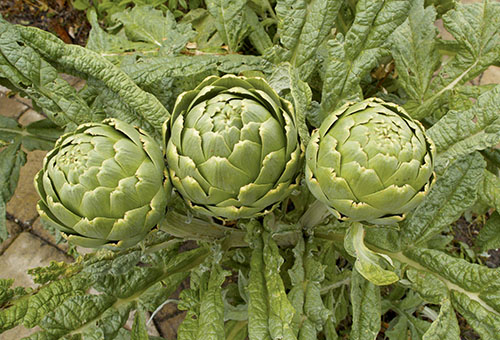
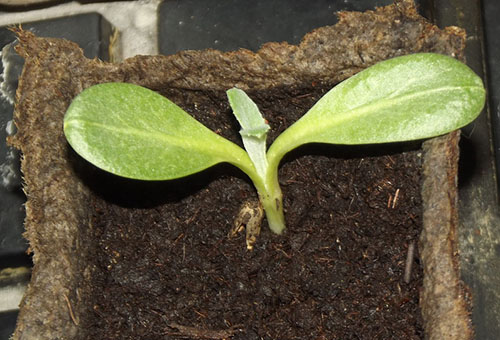
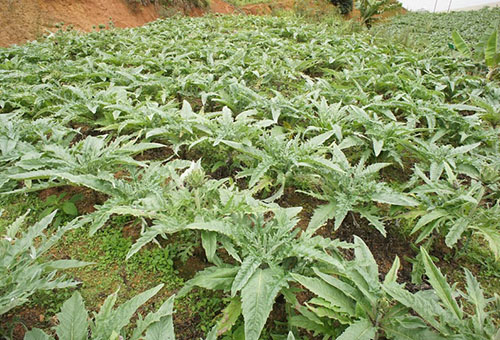
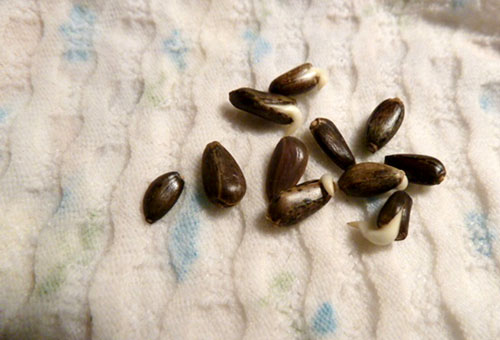



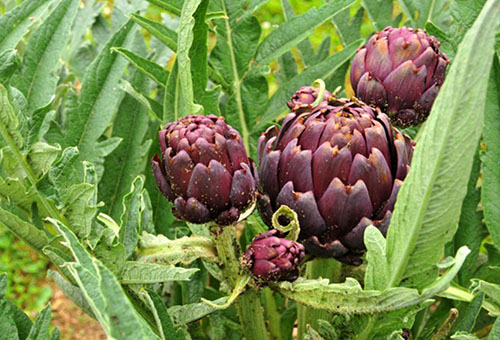

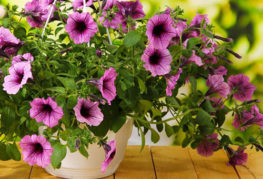
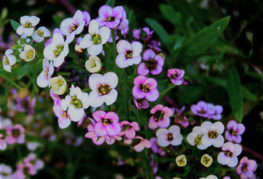
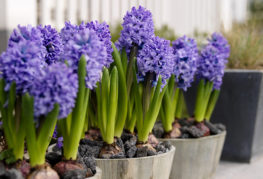
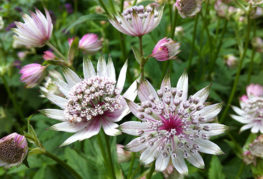

and will be published shortly.